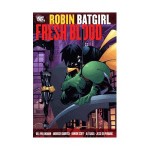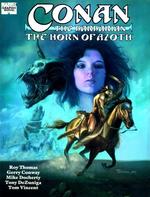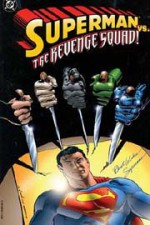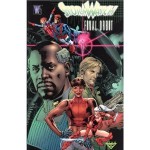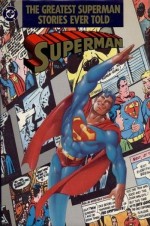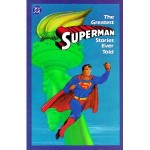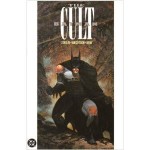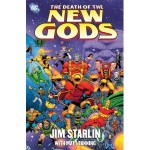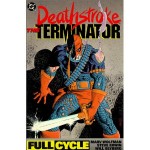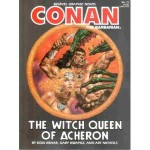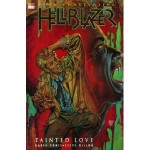
By Garth Ennis & Steve Dillon (Vertigo)
ISBN: 978-1-85286-994-6
John Constantine is probably the greatest anti-hero in comics: a cynical, wide-boy magician and seedy, troubled soul who danced on the edge of damnation every minute of his life, ever unsure of his own motives, shrewdly manipulating events and standing back just to see what happens.
Collecting issues #68-71 of the monthly comicbook, the Heartland one-shot, Hellblazer Special #1 and the Constantine tale from Vertigo Jam #1 this volume describes with astonishing effect the absolute nadir in the Scouse sorcerer’s chequered career and also reveals some hidden secrets from his sordid past… Also included herein is an impressive ‘Hellblazer Gallery’ with stunning contributions from Glenn Fabry, Gary Erskine, Richard Case and Phil Winslade as well as the beautiful Fabry covers which accompanied the original tales.
After years of saving the world without even knowing why – although he feared it was just to spite beings who thought themselves better than him – Constantine fell in love with Irish ex-pat Kit Ryan and seemed on the verge of turning his hell-bent life around, before as usual, his magical heritage and nasty nature messed it all up.
Kit returned to Ireland and Constantine fell apart, hitting the bottle harder than ever and ending up a booze-soaked derelict on London’s cold, hard streets. However, as low as he’s fallen, the entities he’s mocked, manipulated and made mischief with are unforgiving and ready to make things as bad as they can ever get…
This eclectic collection of most-modern horror-thrillers opens with the two-part ‘Last Night of the King of the Vampires’, the final encounter between Constantine and the supernal monster who had fed on humanity since we came down out the trees. Immortal, worldly-wise and blasé as he was the undying lych had never been so grossly insulted as when he first met and propositioned the arrogant magus in Hellblazer: Bloodlines.
Now in ‘Down All the Days’ the decadent bloodsucker executes his revenge on the debased, addled, gin-soaked street trash, determined to wring the last vestige of humiliation, pain and terror out of his fallen foe, commencing by killing the only person still talking to the Hellblazer in ‘Rough Trade’.
However, even in the very pit of despair Constantine had a surprise up his tattered sleeve. It’s not even that he particularly wanted to live; it’s simply his accursed pride wouldn’t let an overbearing, smug, supernatural tosser have the last word…
The second story-arc ‘Fall and Rise’ opens with the eponymous ‘Tainted Love’ (from Vertigo Jam #1) as the old souse relates a salutary tale to a fellow drunk. Once upon a time Constantine had a mate who was a bit of a player. And when Seth cheated on his girlfriend the wizard was there to profit from the revenge sex with Annette. Trouble was the wronged girl had more in mind than tit-for-tat and sneaked a peak at Constantine’s spell-books. Before the blood and dust settled Seth and Annette had both learned not to meddle with the dark arts and that in the end love hurts… and hurts and hurts and hurts…
Whilst the mage was pickling his brains and liver, Kit Ryan had returned to her home and broken family in Belfast. ‘Heartland’ – a superbly poignant shaggy dog tale – saw Kit revisit her formative years and able demonstrated that not all horror stems from devils and demons. Too often the monsters are us…
Constantine’s return to grace and glory finally began with ‘Finest Hour’ as the burned out wreck lay down to die by the river and was sucked into the life and final moments of a Spitfire pilot who had been shot down in flames during the Battle of Britain. Revitalised by his death-or-life experience the wizard took hold of himself and sobered up; ready to face the world once more, beginning with giving his ghostly saviour a decent and long-deserved send-off…
This episodic and eerily eccentric compendium closes with ‘Confessional’ (from Hellblazer Special #1) as the cleaned up conjuror has a chance second encounter with a defrocked priest who nearly succeeded where uncounted eldritch horrors had failed. Long ago a runaway teen named John Constantine hitched a lift with the wrong man, and now decades later there’s a piper to be paid…
I’m once again avoiding specific details since these masterful examples of bravura storytelling from Garth Ennis and Steve Dillon should be enjoyed without any dilution – but for the greatest impact you should also have handy their other collaborations. So track down
Hellblazer is a superb series about flawed heroism and desperate necessity, with a tragic everyman anti-hero compelled to do the right thing no matter what the cost, arrayed against the worst that the world can offer. It’s also the best horror drama in comics and worthy of your devoted attention. Adult comics just don’t come any better than this
© 1993, 1998 DC Comics. All Rights Reserved.

